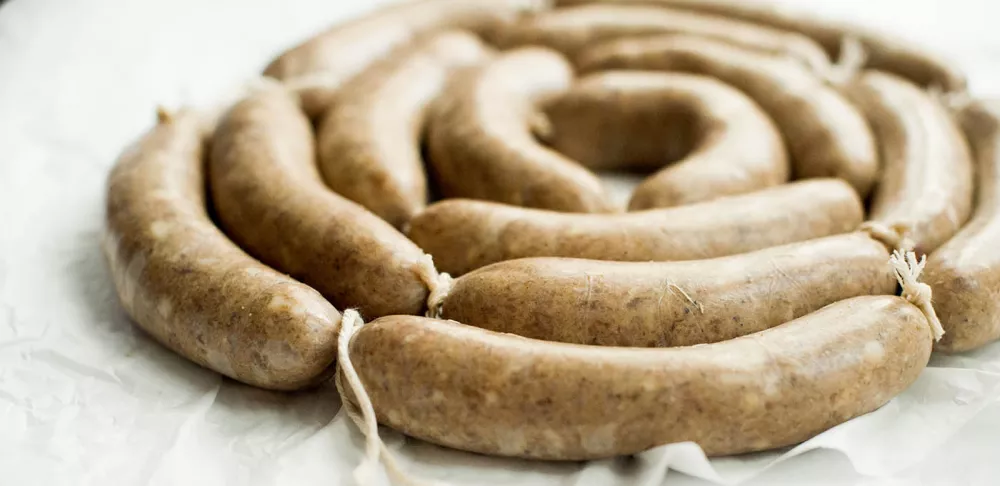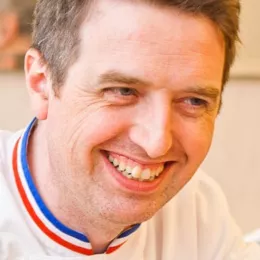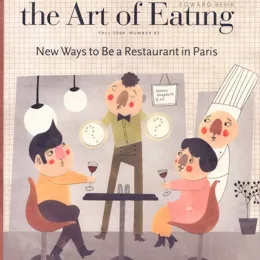Whether as an executive chef, butcher or co-founder of a traveling pop-up dinner series, ICE Culinary Arts and Management alum Alex Pope has received numerous accolades for his progressive style of cooking. Most notably, in 2011, he received a nomination for Food & Wine’s “People’s Best New Chef,” establishing Alex among Kansas City’s most exciting culinary leaders. In his most recent venture, as the CEO and co-owner of a sustainable butcher shop, Local Pig, Alex has earned praise from the likes of the New York Times for his homemade sausages, expert cuts of meat and hands-on fabrication classes.

Before coming to ICE, you were an economics major. What was it that inspired you to come to culinary school?
I worked as a cook in good kitchens while I was in college and I really caught the bug. I loved being on the line—the action, the pressure—and, of course, the food. From there, I had it in my head that if I could make it in NYC, I could make it anywhere. So I knew I was heading to New York, but I also knew I didn’t want to spend a lot of time in school. My research led me to ICE and the French Culinary Institute. I toured both places and just felt more at home at ICE. Also, the Culinary Management program seemed designed to teach me what I wanted, which was to open my own place.
Where was your externship and how did it impact your career?
While I was in school, I worked full time on the line at a place on the Upper West Side called Pair of 8s. The chef was a man named Bill Peet. He was a great mentor to me. He cooked good, straightforward food, worked hard and taught me how to make money at a restaurant.
So, when I was ready to do the externship, I chose to do it in the pastry kitchen at Pair of 8s. I came in at 7 am with the pastry chef, spent the morning with her and then worked the line from 3 pm to midnight. It was great, and working in pastry reinforced my understanding of the work it takes to own and operate a restaurant. Also, I learned to become a half-way decent pastry chef. In fact, I got my first executive chef position in part because the owner liked my desserts so much.
How would you describe your “culinary voice”?
In my career as a chef, I tend toward combining disparate flavors and ethnicities in dishes. I often pair strong flavors with playfulness or components that are familiar with others that are exotic, in an effort to get people outside of their comfort zone. In my current role as an owner of a full-service butcher shop and restaurant, I personally cook much less, but I still rely on hospitality to create a remarkable experience for the patrons of my establishments. My operations are often described as very personable with a little attitude and a DIY spirit. Also, I completely ascribe to Danny Meyer’s hierarchy: employees are first, customers are second. We have very happy employees at my businesses and they provide amazing service because they love their jobs.
Tell us a little about your experiences running a pop-up restaurant and opening your butcher shop. What were your goals, your challenges, and triumphs?
Pop-up restaurants are grueling. They’re a lot of fun and very rewarding artistically, as you get to try dishes and techniques that you just wouldn’t attempt in a day-to-day service restaurant. Because we served everything banquet style, so I would always make the first course something that was served at room temperature and was incredibly technical in plating. I would take hours to plate the first course, but it didn’t matter because everyone was getting the same thing, at the same time. You could also do fun, weird things.
At my first pop-up dinner, I sauced the plate with a paintball! I bought neutral paintball shells, filled them with beet paint and shot them at each plate. Every plate was a unique splatter. (Yes, we broke plates, but not that many.) Another time, I set up the plating tables in the middle of the dining room, and for one course we brought out 15-foot ladders and the cooks stood on them to squirt different sauces out of squeeze bottles onto the plates. It was very dramatic.
The butcher shop has really been my biggest accomplishment. We’ve truly created a viable alternative food system. We bring in more than 7,000 pounds of meat and serve more than 2,000 people each week between the shop, local restaurants, and grocery stores. Every animal we source is raised outdoors on a small family farm (free of drugs and confinement), is treated with dignity it’s whole life and slaughtered humanely. Everything is fresh and local—raised 50 or so miles from our shop—and we’re open 360 days a year. We accept food stamps and we have clientele from every walk of life.
Are there any accomplishments of which you are particularly proud?
We were featured in the New York Times food section for our butchering classes. Seeing my picture in the Times was unreal.
Briefly describe a day in your current working life.
I drop my daughter off at daycare, then I head to our USDA sausage factory to check on that crew. They take care of our wholesale and grocery accounts. Then I go to the butcher shop and meet with the production manager there. Normally, we have a few items to address and then I head to our downtown restaurant, Preservation Market, to get lunch and check-in with the chef. It’s a lot of special projects and putting out fires.
What might people be surprised to learn about your job?
I spend a lot of time writing emails.
Where would you like to see yourself in the future?
I’m very happy where I am right now, but someday I’d like to get a second butcher shop opened. We also really want to get dry-cured meats and salamis going at our USDA plant.




